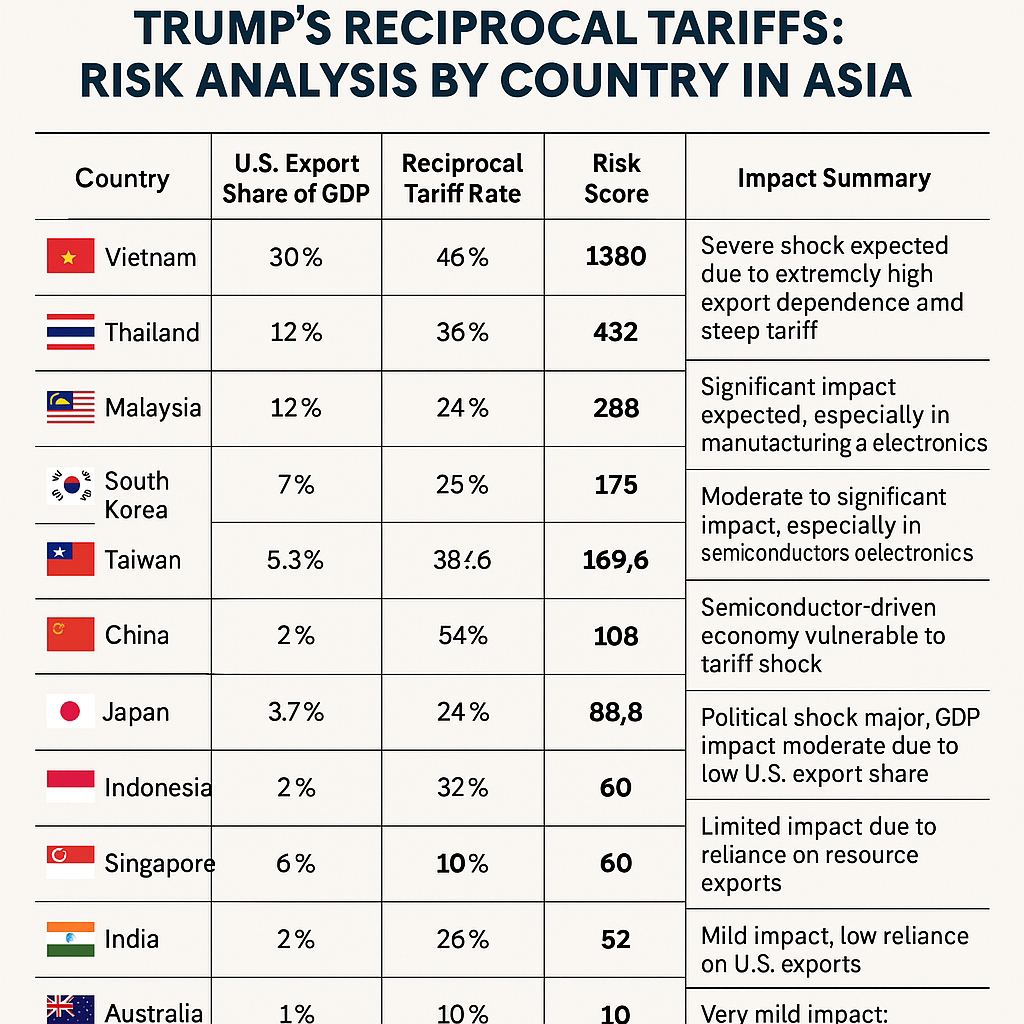On April 2, 2025, U.S. President Donald Trump announced a major shift in trade policy.
The policy imposed a 10% baseline tariff on all imports and introduced higher reciprocal tariffs on countries with large trade surpluses with the United States.
The reciprocal tariffs went into effect on April 9, aiming to correct long-standing imbalances in global trade.
So how did this policy impact major Asian economies?
Country-by-Country Risk Analysis
This analysis is based on two key indicators:
- Share of U.S. exports relative to each country's GDP
- The reciprocal tariff rate imposed by the U.S.
By multiplying these two factors, we calculated a Risk Score, where a higher score indicates greater economic vulnerability.
Key Takeaways
- Vietnam faces the greatest economic risk, driven by both high U.S. export dependence and a steep tariff rate.
- Thailand and Malaysia also face substantial risks, particularly in their export-heavy manufacturing sectors.
- South Korea and Taiwan fall into the moderate-risk group but need to watch closely as their core industries are targeted.
- China suffers more from symbolic and psychological effects rather than direct GDP loss.
- Australia and Singapore are relatively safe, with low exposure and minimal tariff pressure.
Conclusion
Trump’s reciprocal tariff policy does more than just adjust trade balances — it sends wide-reaching shockwaves across the Asian economies.
Emerging economies heavily reliant on U.S. exports are especially vulnerable and must re-evaluate their trade strategies moving forward.
It will be crucial to watch how each country responds to this trade shock and how the global supply chain reconfigures in the coming years.
Thank you for reading!
If you would like a deeper dive into specific countries or sectors, feel free to leave a comment

No comments:
Post a Comment